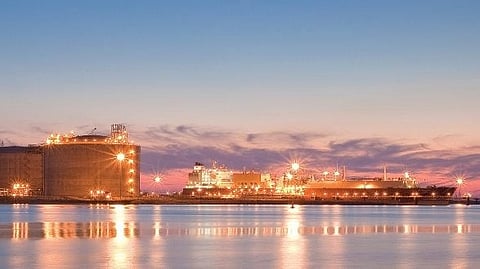

US natural gas futures fell about four per cent to a one-week low on Tuesday on record output and ample amounts of gas in storage.
Prices dropped despite record gas flows to liquefied natural gas export plants and forecasts of colder weather and higher demand than previously expected over the next two weeks.
On its last day as the front-month, gas futures for December delivery on the New York Mercantile Exchange fell 17.2 cents, or 3.8 per cent, to $4.377 per million British thermal units (mmBtu). Futures for January 2026, which will soon be the front-month, were down about 3.8 per cent at $4.50 per mmBtu.
LSEG said average gas output in the Lower 48 states had risen to 109.7 billion cubic feet per day (bcfd) so far this month, up from 107.4 bcfd in October and a record monthly high of 108.3 bcfd in August. On a daily basis, output had climbed to a record 111.2 bcfd on November 24, topping the previous record daily peak of 110.8 bcfd on November 23.
Record output this year has allowed energy companies to stockpile more gas than usual, with about five per cent more gas in storage than is normal for this time of year. Meteorologists forecast temperatures across the country will remain mostly colder than normal through December 10.
LSEG projected average gas demand in the Lower 48 states, including exports, would rise from 122 bcfd this week to 140.4 bcfd next week. Those forecasts were higher than LSEG’s outlook on Monday.
Average gas flows to the eight big US LNG export plants operating in the US have risen to 18 bcfd so far this month, up from a record 16.6 bcfd in October. On a daily basis, LNG export feedgas was on track to reach 18.7 bcfd on Tuesday, up from the current all-time daily high of 18.6 bcfd on November 15.
In other LNG news, the Imsaikah LNG vessel was moving across the Caribbean Sea on its way to Exxon Mobil/QatarEnergy’s 2.4 bcfd Golden Pass LNG export plant under construction in Texas. The ship, expected to arrive at Golden Pass around November 29, is carrying LNG from Qatar.
Traders and analysts say the LNG will be used to cool equipment as part of the commissioning of the plant. The facility is expected to start producing LNG this year or early next year.
The United States became the world’s biggest LNG producer in 2023, surpassing Australia and Qatar as surging global prices fed demand for more exports. This was due in part to supply disruptions and sanctions linked to Russia’s 2022 invasion of Ukraine.
Around the world, gas prices fell to a 16-month low near $10 per mmBtu at the Dutch Title Transfer Facility (TTF) in Europe. This was due to negotiations over a potential peace plan for Russia and Ukraine, while prices at the Japan Korea Marker (JKM) in Asia held around a one-week low of $11.
(Reporting by Scott DiSavino in New York. Editing by Mark Potter)
